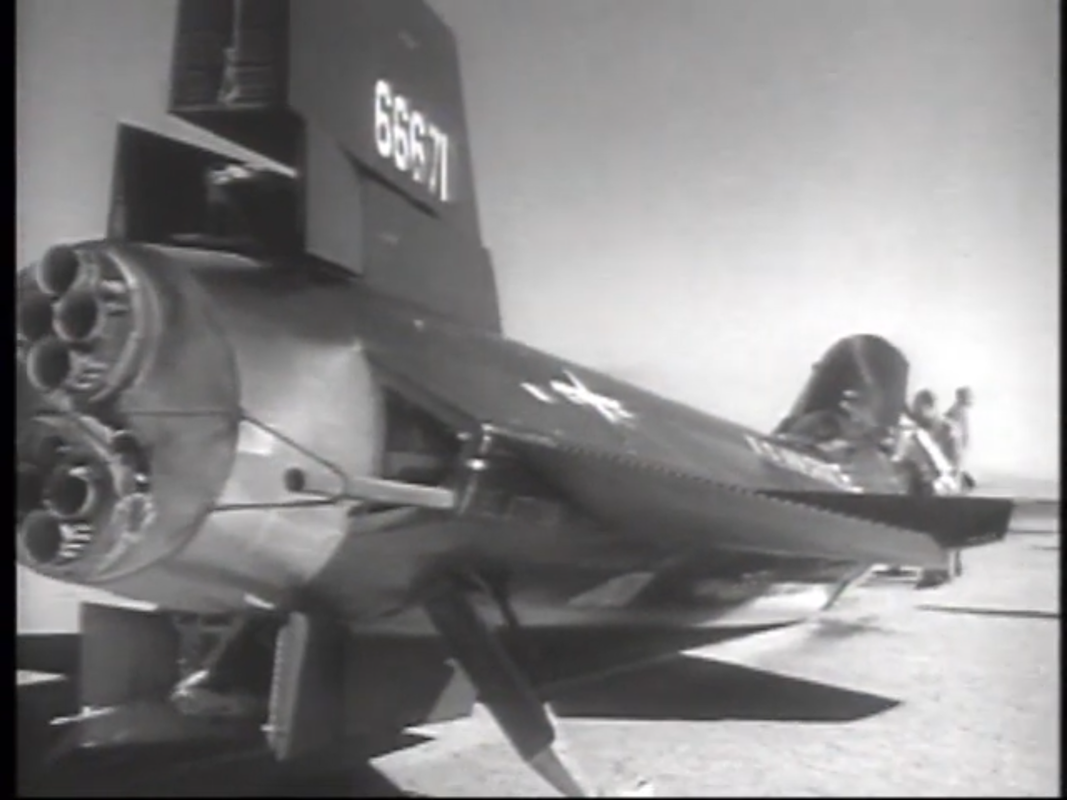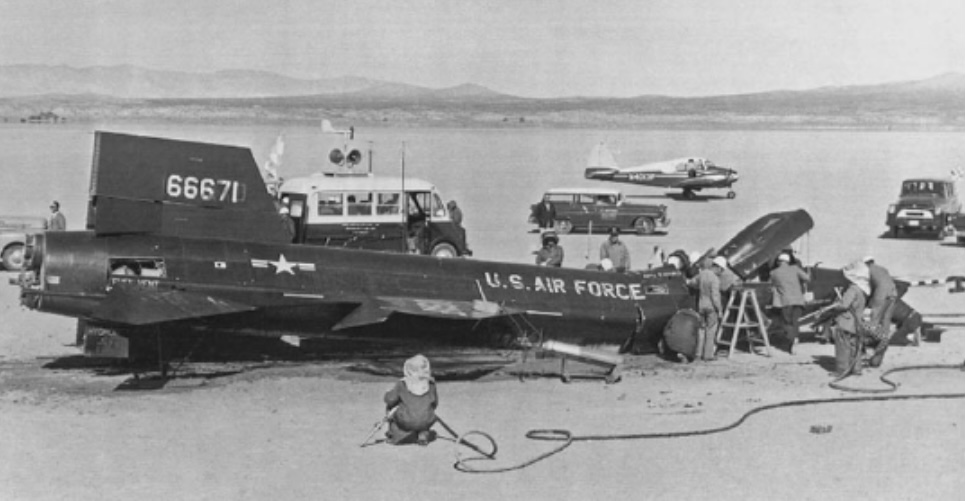X-15 colors are an iffy thing. Most of the airframe was made of Inconel X, which is a silvery color. However, it turns a bluish-black when heated, including aerodynamic heating. Some panels turned darker than others. Some describe the overall color as gunmetal black. Also, when they stretched the fuselage and side tunnels to build the 'A-2, those sections were painted semi-gloss or flat black. Some panels appeared a metallic gray. Lighting always played a role in how they looked in photos. For example, there are photos and screencaps from Scott Crossfield's hard landing on Flight 2-3-9 (below) where you'd swear the tailcone was silver, and photos from the same flight where you'd swear it was black. (It was painted black.) The airframes always wound up having a patchy appearance.
Prior to being rolled out, each X-15 was painted a semi-gloss black that had a bluish tint. The paint wore off quickly, though, and so the vehicles took on the color of heated Inconel.
Keeping the markings on the airframes looking nice and new wasn't the highest of priorities, but technicians did a good job (up to a point) of repainting markings that were scorched after high-speed flight. Aerodynamic heating had a habit of turning the paint to goo. Some paints fared better than others. The yellow they used was hardy, but many post-flight photos show the blue NASA "meatball" on the nose obliterated By the heat. It was generally always repainted, though. The X-15 was NASA's first X-plane and was the first plane to carry NASA markings, so there was some pride involved.
However, sometimes there were no markings on the wings, or the dorsal rudder carried the yellow NASA band on one side and not the other; same with the serial numbers. The X-15A-2 was an exception to that in that it had the banner and serial numbers on both sides up until the ablative and sealant were applied.

